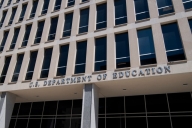You have /5 articles left.
Sign up for a free account or log in.
Last week, Scott Jaschik wrote a piece here at Inside Higher Ed about direct admissions. If you missed it, here’s the link. When Scott was at the annual NECHE meetings in Boston this past December, the rise of direct admissions made his top 10 list of trends in higher ed. With the practice of direct admissions, colleges proactively reach out to high school students with a letter of acceptance. There are many ways that this can be facilitated, some of which include the following: an arrangement between a single college and high school, in a centrally organized process in state education offices, or through a third-party vendor.
Personally, I view direct admissions as a game changer, especially for those students who do not see themselves as college material and their families. In response to the media’s refrain of “College isn’t for everyone,” I tend to believe that college is for everyone, and if it isn’t, then college needs to change, but that’s a topic for another day. Direct admissions reduces barriers of time and money but it also reduces the psychological risk associated with fear of rejection and failure. For those who don’t see themselves as college-going, a letter congratulating them on being accepted can be a radical reframing of their future. Odle and Delaney have a great article on this (link here), and the quotes from students accepted through direct admissions are kind of amazing.
Here are just a couple from Carson Howell’s work (2019) in Idaho and cited in Odle and Delaney (2022).
“The letter really changed my perspective. It genuinely opened doors for me that I’d never thought possible.”
“I didn’t think any college would accept me, but I was wrong.”
This second quote is particularly heartbreaking. To me, the fact that there are many young people out there who are choosing to reject colleges before colleges reject them is a crisis when the overwhelming majority of our institutions are either open access or broad access.
Clearly, this is a game changer for students and their families but it is also a potential boon to enrollment-strapped institutions, especially community colleges, many of which have experienced double-digit enrollment declines.
For institutions or states considering a move in this direction, what are the infrastructure needs to make this happen? What kinds of technology solutions are necessary to seamlessly connect secondary and postsecondary education databases? What are the privacy issues? How do you staff up for processing the applications and reaching out to prequalified and pre-accepted students? How do you retrain recruitment staff or do you?
Have you tried direct admissions in your institution? How is it going? Let me know. I’d love to hear more. Send me an email at marylchurchill@gmail.com if you are interested.
Mary Churchill is professor of the practice and director of the higher education administration program at Boston University, where she also serves as associate dean. She is co-author of When Colleges Close: Leading in a Time of Crisis.

